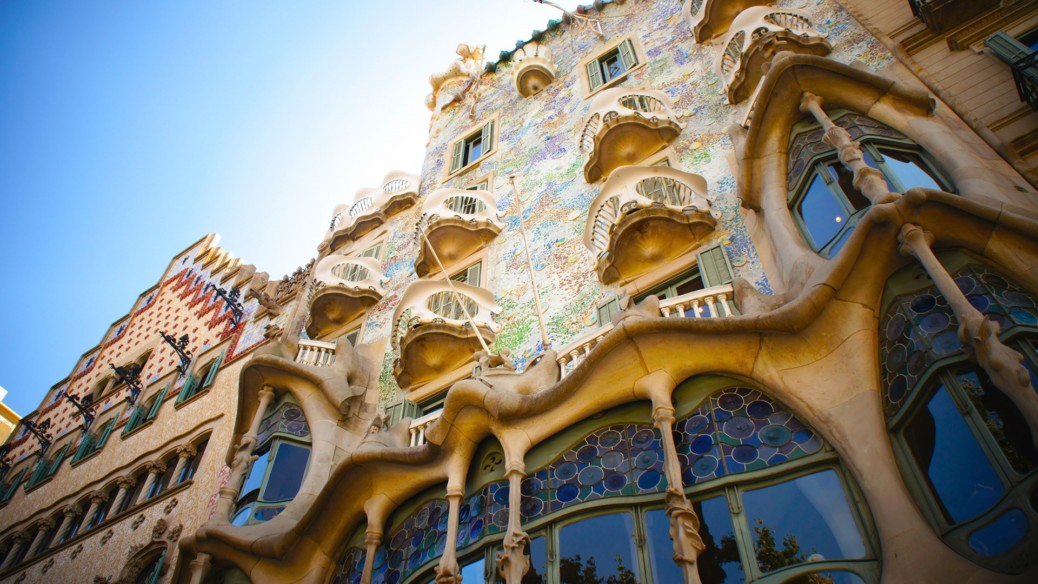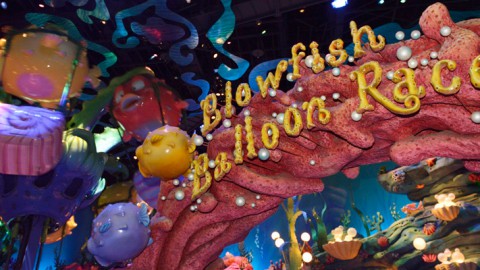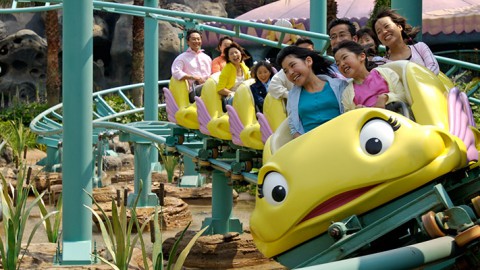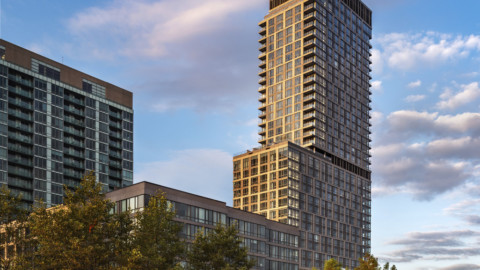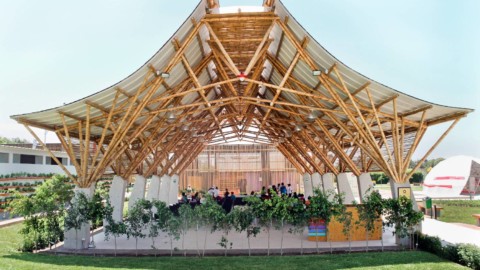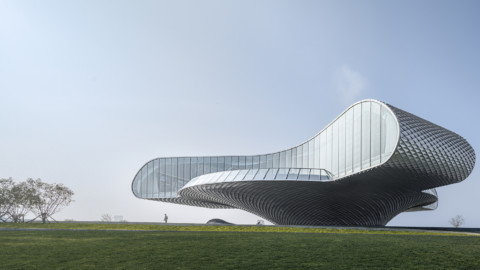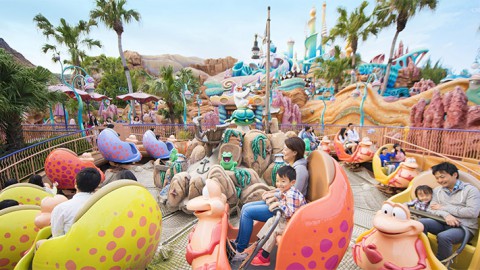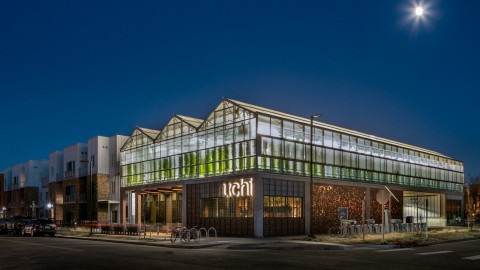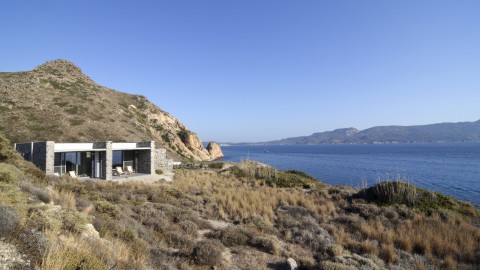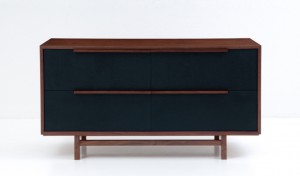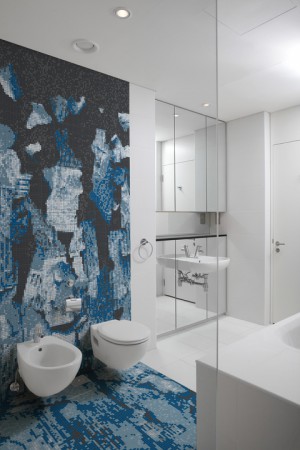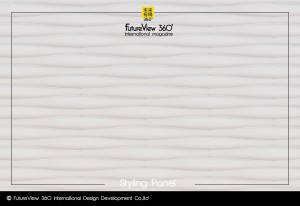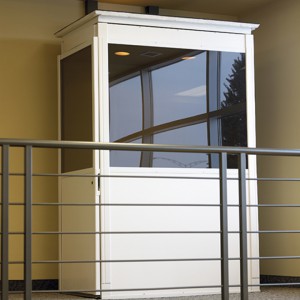Town or city:Barcelona
Country:Spain
Material:stones, metal, wood, ceramic and colours
Architect:Antoni Gaudí
Other designers:Domènec Sugrañes i Gras, Josep Canaleta, Joan Rubió
城鎮:巴塞羅那
國家:西班牙
材質:石材,金屬,木材,陶瓷和顏色
建築師:安東尼·高迪
其他設計師:DomènecSugrañesi Gras,Josep Canaleta,JoanRubió
Casa Batlló (Catalan pronunciation: [ˈkazə βəˈʎːo]) is a building in the center of Barcelona. It was designed by Antoni Gaudí, and is considered one of his masterpieces. A remodel of a previously built house, it was redesigned in 1904 by Gaudí and has been refurbished several times after that. Gaudí’s assistants Domènec Sugrañes i Gras, Josep Canaleta and Joan Rubió also contributed to the renovation project.
CasaBatlló(加泰羅尼亞語的發音:[ˈkazə βəˈʎːo])是位於巴塞羅那市中心的建築物。 它是由安東尼·高迪(AntoniGaudí)設計的,被認為是他的傑作之一。 高迪於1904年對以前建造的房屋進行了重新設計,之後對其進行了多次翻新。 高迪的助手DomènecSugrañesi Gras,Josep Canaleta和JoanRubió也為翻新項目做出了貢獻。
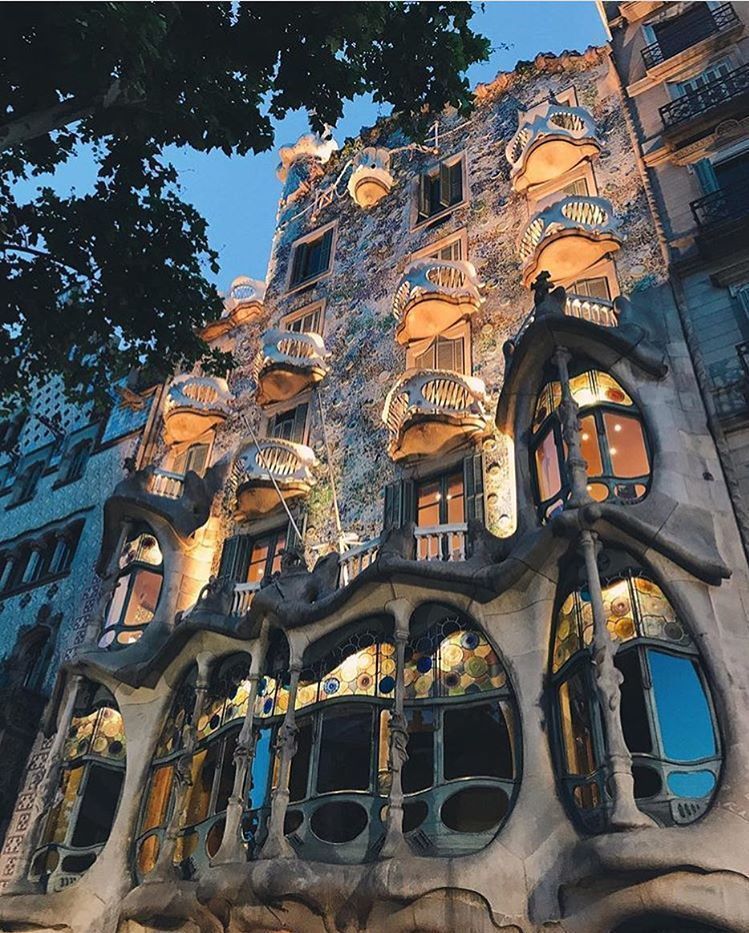
The local name for the building is Casa dels ossos (House of Bones), as it has a visceral, skeletal organic quality. It is located on the Passeig de Gràcia in the Eixample district, and forms part of a row of houses known as the Illa de la Discòrdia (or Mansana de la Discòrdia, the “Block of Discord”), which consists of four buildings by noted Modernista architects of Barcelona.
建築物的本地名稱為Casa dels ossos(骨頭之屋),因為它具有內在的骨骼有機質感。 它位於Eixample區的Passeig deGràcia,並構成一排名為Illa de laDiscòrdia(或Mansana de laDiscòrdia,“不和諧街區”)的房屋的一部分,該房屋由四座建築物組成,據悉 巴塞羅那的Modernista建築師。
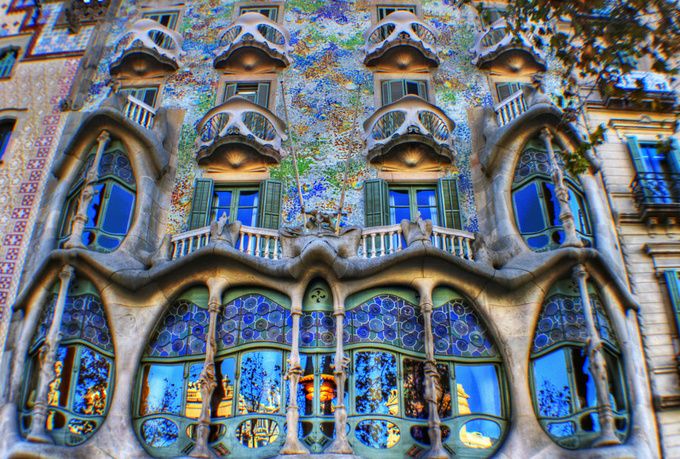
Like everything Gaudí designed, Casa Batlló is only identifiable as Modernisme or Art Nouveau in the broadest sense. The ground floor, in particular, has unusual tracery, irregular oval windows and flowing sculpted stone work. There are few straight lines, and much of the façade is decorated with a colorful mosaic made of broken ceramic tiles (trencadís). The roof is arched and was likened to the back of a dragon or dinosaur. A common theory about the building is that the rounded feature to the left of centre, terminating at the top in a turret and cross, represents the lance of Saint George (patron saint of Catalonia, Gaudí’s home), which has been plunged into the back of the dragon.
像高迪設計的一切一樣,巴特羅之家從最廣泛的意義上來說只能被識別為現代主義或新藝術運動。 尤其是一樓,有異常的窗飾,不規則的橢圓形窗戶和流動的雕刻石材。 直線很少,並且大部分立面都裝飾有由碎瓷磚(trencadís)製成的彩色馬賽克。 屋頂是拱形的,比喻為龍或恐龍的背面。 關於建築物的一種常見理論是,中心左側的圓形特徵終止於砲塔和十字形的頂部,代表了聖喬治(高迪的家,加泰羅尼亞的守護神)的長矛,該長矛被刺入了後座 龍的。
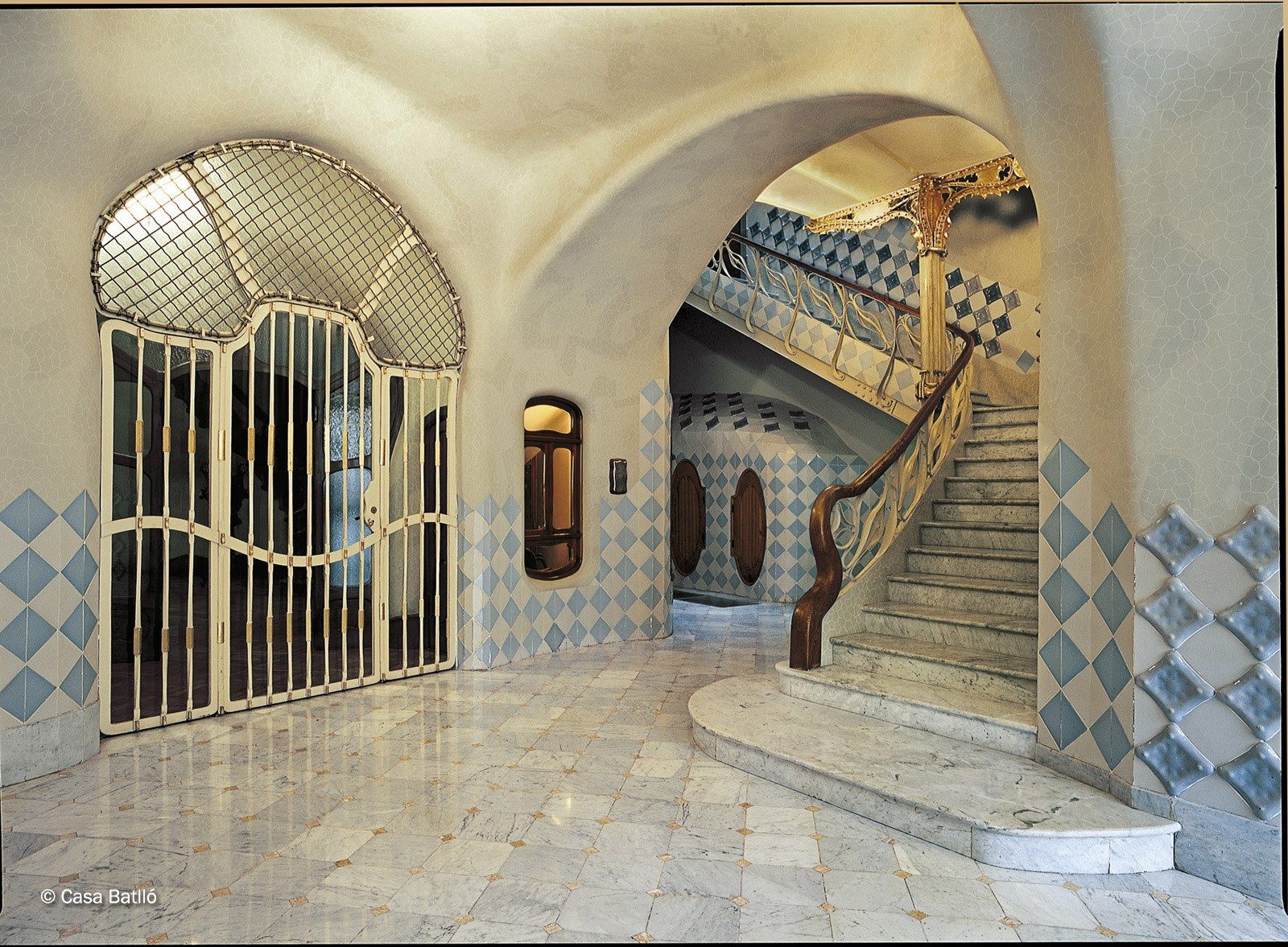
Overview|概述
The local name for the building is Casa dels ossos (House of Bones), as it has a visceral, skeletal organic quality. The building looks very remarkable — like everything Gaudí designed, only identifiable as Modernisme or Art Nouveau in the broadest sense. The ground floor, in particular, is rather astonishing with tracery, irregular oval windows and flowing sculpted stone work.
It seems that the goal of the designer was to avoid straight lines completely. Much of the façade is decorated with a mosaic made of broken ceramic tiles (trencadís) that starts in shades of golden orange moving into greenish blues. The roof is arched and was likened to the back of a dragon or dinosaur. A common theory about the building is that the rounded feature to the left of centre, terminating at the top in a turret and cross, represents the lance of Saint George (patron saint of Catalonia, Gaudí’s home), which has been plunged into the back of the dragon.
建築物的本地名稱為Casa dels ossos(骨頭之屋),因為它具有內在的骨骼有機質感。 該建築看起來非常引人注目-就像高迪設計的一切一樣,從最廣義的意義上講,只能被識別為現代主義或新藝術運動。 尤其是一樓的窗飾,不規則的橢圓形窗戶和流動的雕刻石雕作品令人吃驚。
設計師的目標似乎是完全避免直線。 大部分立面都裝飾有由碎瓷磚(trencadís)製成的馬賽克,從金色的橙色開始逐漸變成綠色的藍色。 屋頂是拱形的,比喻為龍或恐龍的背面。 關於建築物的一種常見理論是,中心左側的圓形特徵終止於砲塔和十字形的頂部,代表了聖喬治(高迪的家,加泰羅尼亞的守護神)的長矛,該長矛被刺入了後座 龍的。
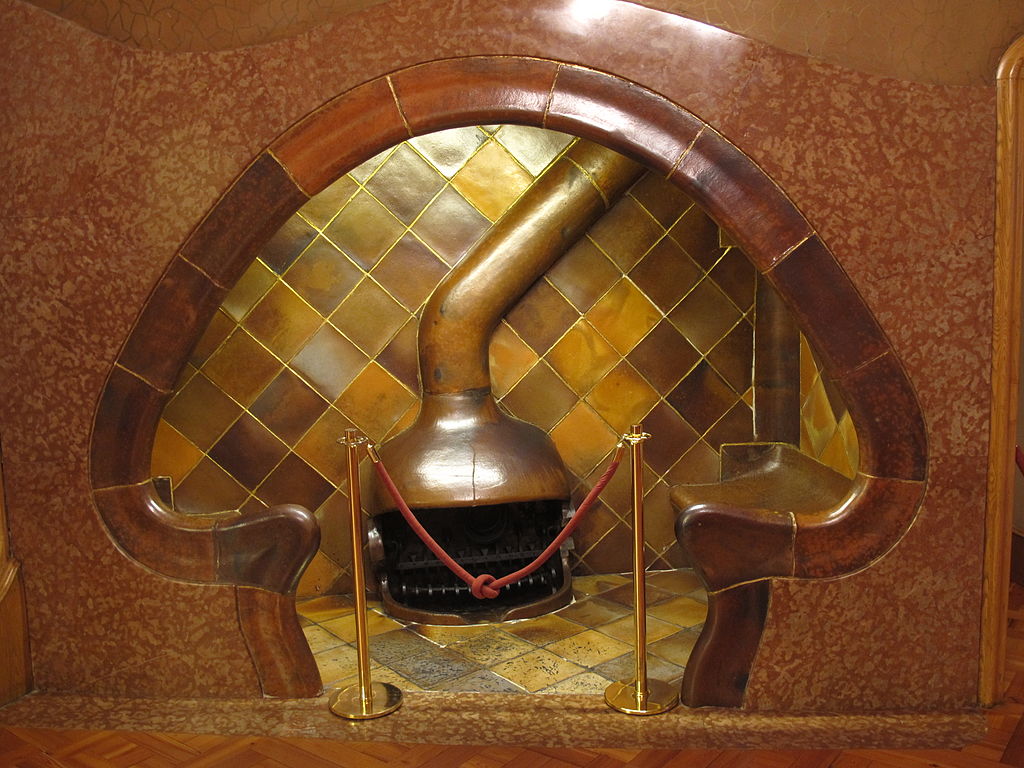
Loft|閣樓
The loft is considered to be one of the most unusual spaces. It was formerly a service area for the tenants of the different apartments in the building which contained laundry rooms and storage areas. It is known for its simplicity of shapes and its Mediterranean influence through the use of white on the walls. It contains a series of sixty catenary arches that creates a space which represents the ribcage of an animal. Some people believe that the “ribcage” design of the arches is a ribcage for the dragon’s spine that is represented in the roof.
閣樓被認為是最不尋常的空間之一。 它以前是建築物中不同公寓的租戶的服務區,其中包含洗衣房和儲藏區。 它以形狀簡單和通過在牆壁上使用白色而受到地中海的影響而聞名。 它包含一系列的60個懸鏈線拱形物,形成了代表動物胸腔的空間。 有人認為,拱門的“肋骨”設計是屋頂上所代表的龍脊柱的肋骨。
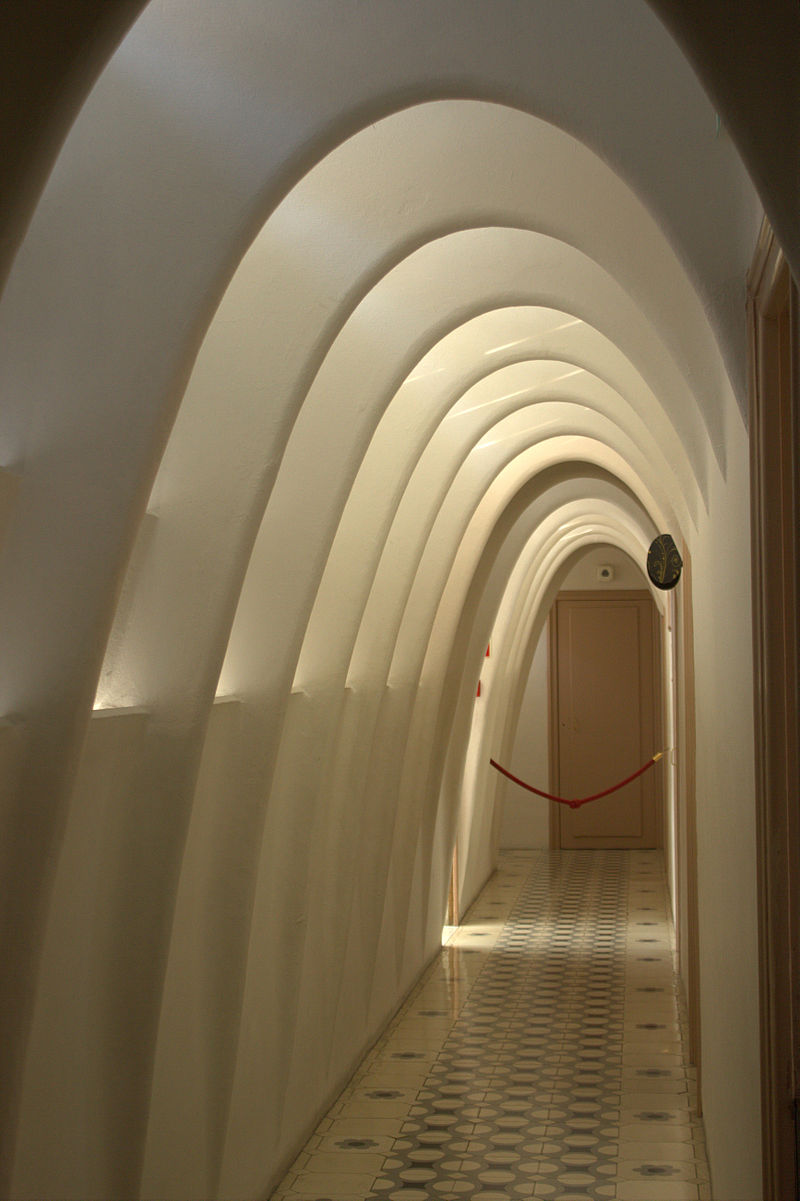
Noble floor and museum|高貴的地板和博物館
The noble floor is larger than seven-hundred square meters. It is the main floor of the building. The noble floor is accessed through a private entrance hall that utilizes skylights resembling tortoise shells and vaulted walls in curving shapes. On the noble floor, there is a spacious landing with direct views to the blue tiling of the building well. On the Passeig de Gracia side is Mr. Batlló’s study, a dining room, and a secluded spot for courting couples, decorated with a mushroom-shaped fireplace. The elaborate and animal-like décor continues throughout the whole noble floor.
In 2002, the house opened its doors to the public, and people were allowed to visit the noble floor. The building was opened to the public as part of the celebration of the International Year of Gaudí. Casa Batlló met with very much unanticipated success, and visitors became eager to see the rest of the house. Two years later, in celebration of the one hundredth anniversary of the beginning of work on Casa Batlló, the fifth floor was restored and the house extended its visit to the loft and the well. In 2005, Casa Batlló became a UNESCO World Heritage Site.
高貴的地板大於七百平方米。它是建築物的主層。高貴的地板可通過私人入口大廳進入,入口大廳採用了類似烏龜殼的天窗和彎曲形狀的拱形牆。在高貴的樓層上,有一個寬敞的平台,可直接看到建築物的藍色瓷磚。巴特洛先生的書房,Passeig de Gracia邊上是一間餐廳,還有一個幽靜的地方,用蘑菇形壁爐裝飾,吸引情侶,這是她的書房。精心裝飾和動物般的裝飾貫穿整個高貴樓層。
2002年,這座房子向公眾敞開大門,人們被允許參觀高貴的樓層。該建築是高迪國際年慶祝活動的一部分向公眾開放。巴特羅之家(CasaBatlló)取得了意想不到的成功,參觀者急切地希望看到房子的其餘部分。兩年後,為慶祝在巴特羅之家開始工作一百週年,對五樓進行了修復,房屋將參觀範圍擴大到了閣樓和水井。 2005年,巴特羅之家成為聯合國教科文組織世界遺產。
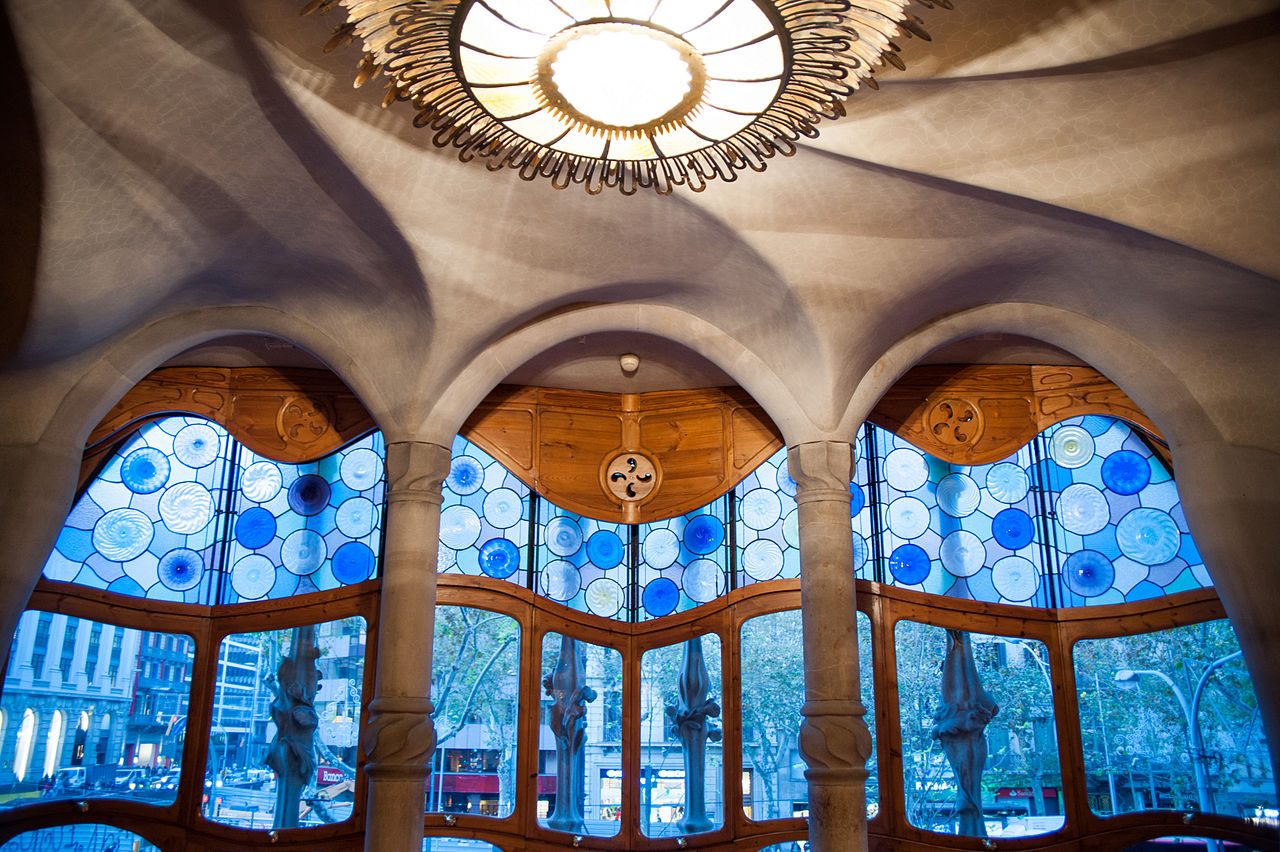
Roof|屋頂
The roof terrace is one of the most popular features of the entire house due to its famous dragon back design. Gaudí represents an animal’s spine by using tiles of different colors on one side. The roof is decorated with four chimney stacks, that are designed to prevent backdraughts.
屋頂露台因其著名的龍背設計而成為整個房屋最受歡迎的特色之一。 高迪通過在一側上使用不同顏色的瓷磚來代表動物的脊椎。 屋頂裝飾有四個煙囪,旨在防止倒水。
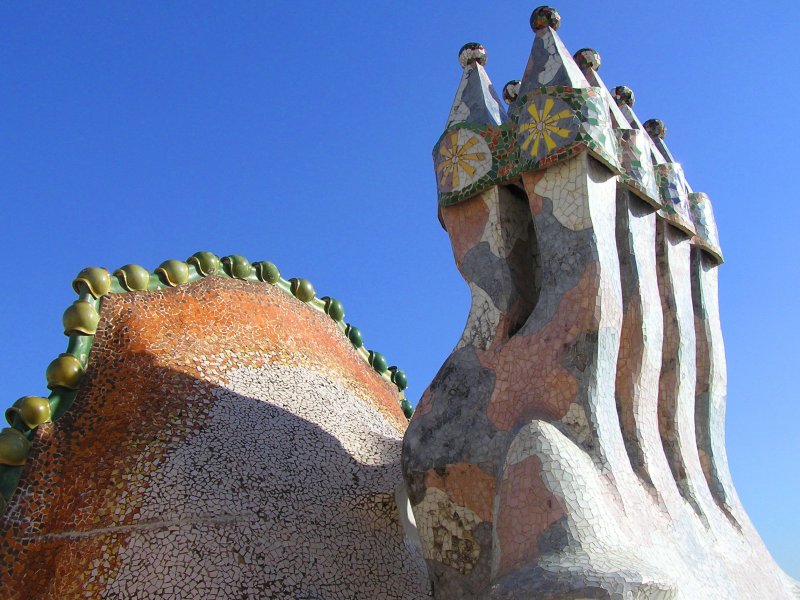
Exterior façade|外立面
The façade has three distinct sections which are harmoniously integrated. The lower ground floor with the main floor and two first-floor galleries are contained in a structure of Montjuïc sandstone with undulating lines. The central part, which reaches the last floor, is a multicolored section with protruding balconies. The top of the building is a crown, like a huge gable, which is at the same level as the roof and helps to conceal the room where there used to be water tanks. This room is currently empty. The top displays a trim with ceramic pieces that has attracted multiple interpretations.
立面具有三個截然不同的部分,這些部分和諧地融合在一起。 帶有主線的低層底層和兩個第一層畫廊包含在帶有波浪線的Montjuïc砂岩結構中。 到達最後一層的中央部分是帶有凸出陽台的彩色部分。 建築物的頂部是一個冠冕,就像一個巨大的山牆,與屋頂在同一水平線上,有助於隱藏曾經有水箱的房間。 這個房間目前是空的。 頂部顯示帶有陶瓷件的飾邊,吸引了多種詮釋。
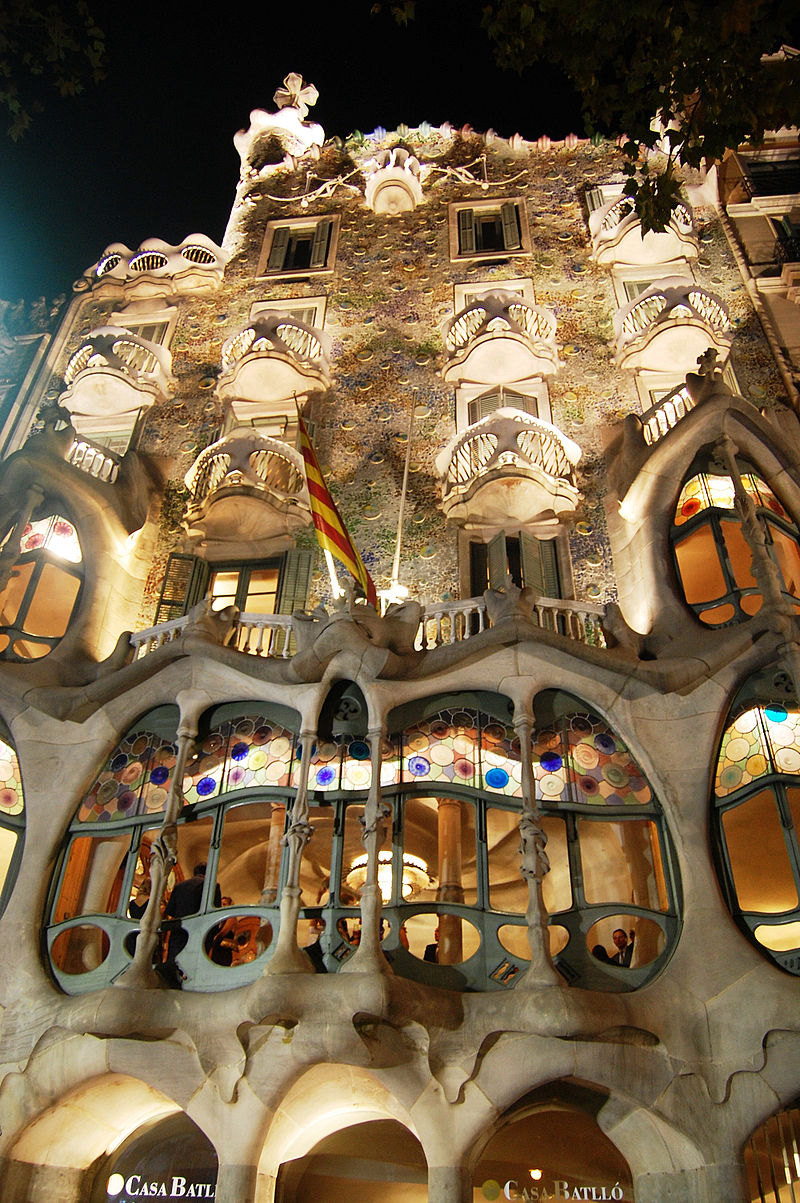
Roof tiles|屋面瓦
The roof’s arched profile recalls the spine of a dragon with ceramic tiles for scales, and a small triangular window towards the right of the structure simulates the eye. Legend has it that it was once possible to see the Sagrada Família through this window, which was being built simultaneously. The view of the Sagrada Família is now blocked from this vantage point by newer buildings. The tiles were given a metallic sheen to simulate the varying scales of the monster, with the color grading from green on the right side, where the head begins, to deep blue and violet in the center, to red and pink on the left side of the building.
屋頂的拱形輪廓讓人想起一條龍的脊椎,上面鋪著瓷磚,用於鱗片,朝向結構右側的小三角形窗戶模擬了眼睛。 傳說曾經有可能通過該窗口同時看到聖家堂。 現在,新建築物將聖家堂的景色從這個有利位置阻擋了。 瓷磚具有金屬光澤,以模擬怪物的不同比例,顏色從頭部開始的右側綠色逐漸變深,中間從深藍色和紫色變為左側的紅色和粉紅色。 建築物。
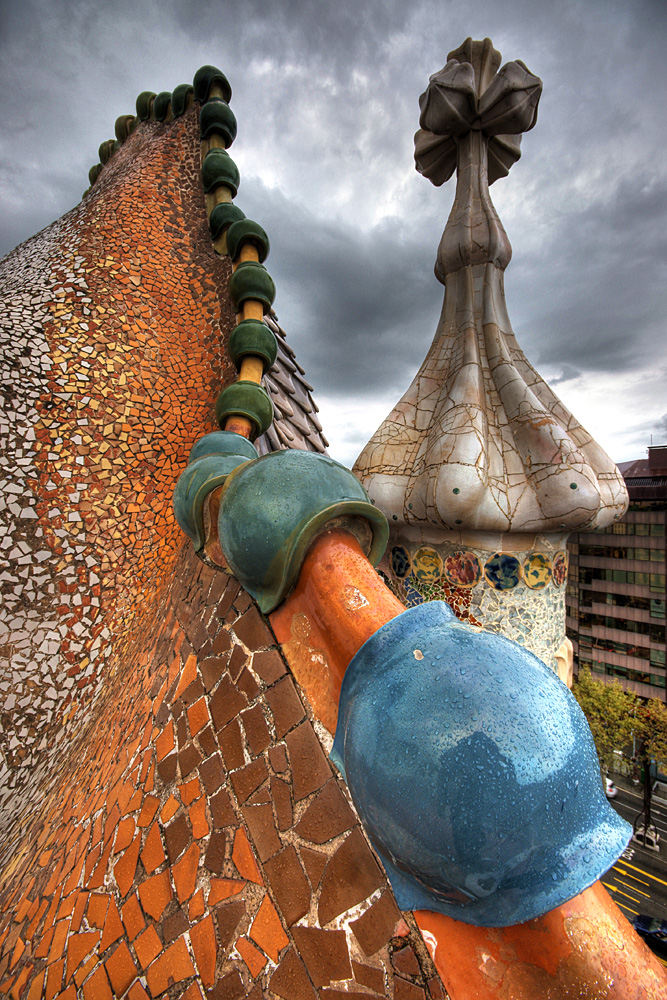
Tower and bulb|塔和燈泡
One of the highlights of the façade is a tower topped with a cross of four arms oriented to the cardinal directions. It is a bulbous, root-like structure that evokes plant life. There is a second bulb-shaped structure similarly reminiscent of a thalamus flower, which is represented by a cross with arms that are actually buds announcing the next flowering. The tower is decorated with monograms of Jesus (JHS), Maria (M with the ducal crown) and Joseph (JHP), made of ceramic pieces that stand out golden on the green background that covers the façade. These symbols show the deep religiosity of Gaudí, who was inspired by the contemporaneous construction of his basilica to choose the theme of the holy family.
The bulb was broken when it was delivered, perhaps during transportation. Although the manufacturer committed to re-do the broken parts, Gaudí liked the aesthetic of the broken masonry and asked that the pieces be stuck to the main structure with lime mortar and held in with a brass ring.
立面的一大亮點是塔樓,塔頂上有四個朝向基本方向的交叉臂。它是球根狀的結構,喚起植物的生命。還有第二個球莖狀的結構,類似地讓人聯想到丘腦花,它由一個帶有雙臂的十字架表示,實際上是芽,宣布下一次開花。塔身裝飾有耶穌(JHS),瑪麗亞(M帶公爵冠)和約瑟夫(JHP)的美術字,它們用陶瓷件製成,在覆蓋立面的綠色背景上顯得金黃。這些符號顯示了高迪的深厚宗教信仰,高迪因同時修建教堂以選擇聖家的主題而受到啟發。
燈泡在交付時可能已損壞,也許在運輸過程中也已損壞。儘管製造商承諾重做損壞的零件,但高迪還是喜歡破碎的砌體的美感,並要求將零件用石灰砂漿粘在主體結構上,並用黃銅環固定。
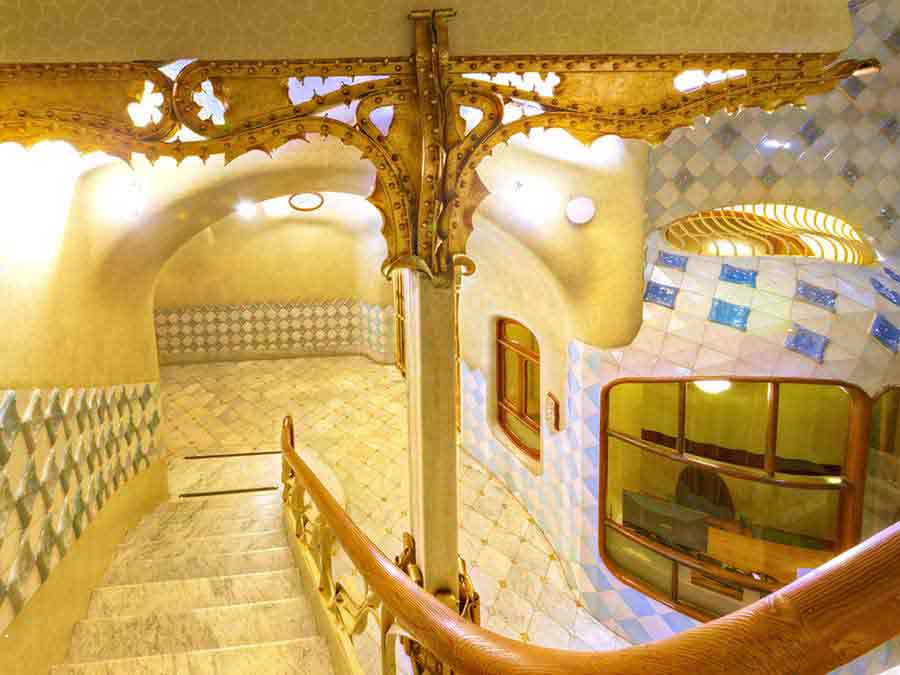
Central section|中央部分
The central part of the façade evokes the surface of a lake with water lilies, reminiscent of Monet’s Nymphéas, with gentle ripples and reflections caused by the glass and ceramic mosaic. It is a great undulating surface covered with plaster fragments of colored glass discs combined with 330 rounds of polychrome pottery. The discs were designed by Gaudí and Jujol between tests during their stay in Majorca, while working on the restoration of the Cathedral of Palma.
立面的中央部分喚起了一個睡蓮湖的表面,讓人聯想到莫奈的仙女座,由玻璃和陶瓷馬賽克引起的柔和漣漪和反射。 這是一個巨大的起伏表面,上面覆蓋著彩色玻璃圓盤的石膏碎片,並結合了330輪彩陶。 這些唱片是由高迪(Gaudí)和朱約爾(Jujol)在他們在馬略卡島停留期間的兩次測試之間設計的,當時他們正在修復帕爾馬大教堂。
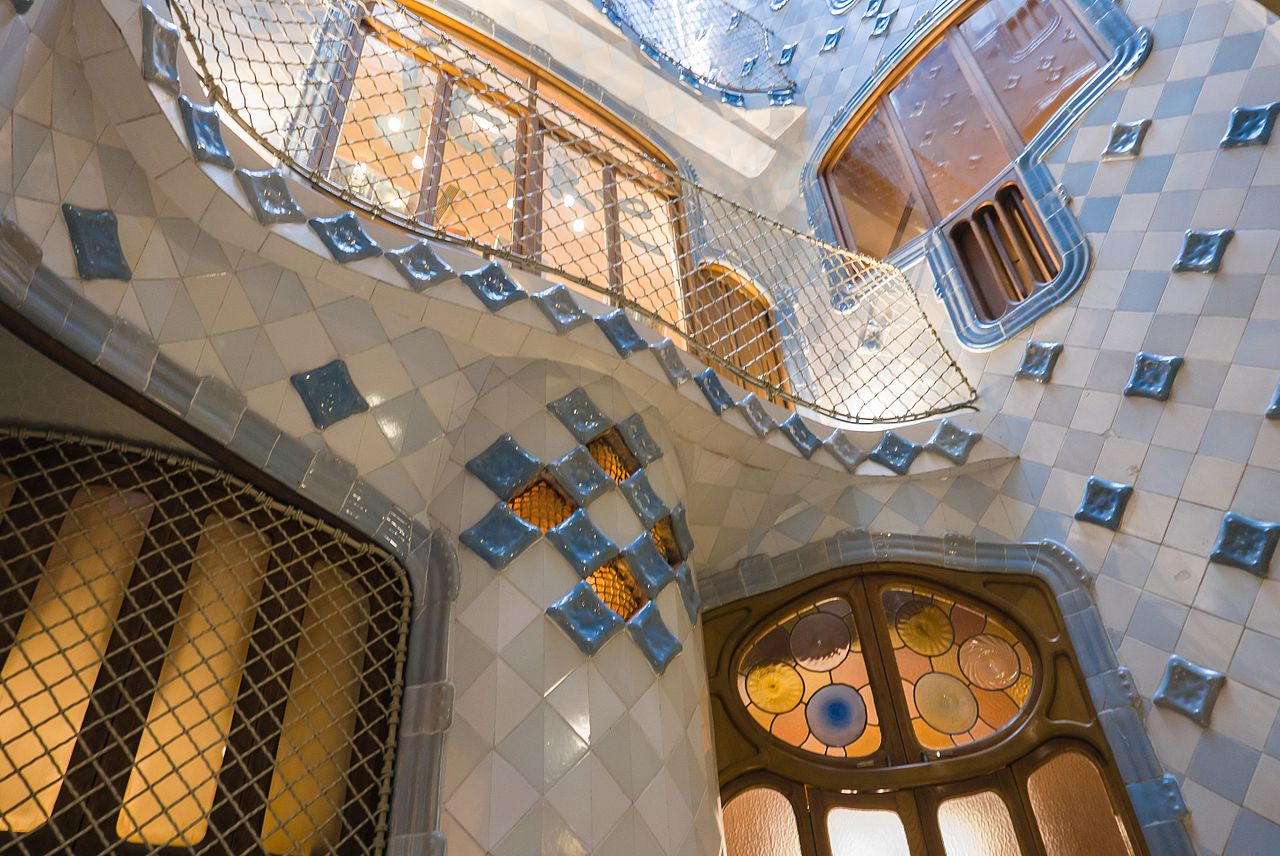
Main floor|主層
The façade of the main floor, made entirely in sandstone, and is supported by two columns. The design is complemented by joinery windows set with multicolored stained glass. In front of the large windows, as if they were pillars that support the complex stone structure, there are six fine columns that seem to simulate the bones of a limb, with an apparent central articulation; in fact, this is a floral decoration. The rounded shapes of the gaps and the lip-like edges carved into the stone surrounding them create a semblance of a fully open mouth, for which the Casa Batlló has been nicknamed the “house of yawns”. The structure repeats on the first floor and in the design of two windows at the ends forming galleries, but on the large central window there are two balconies as described above.
主層的立面完全由砂岩製成,並由兩根柱子支撐。 該設計還輔以鑲嵌有彩色彩色玻璃的細木工窗戶。 在大窗戶前,好像是支撐複雜石頭結構的柱子一樣,有六根細細的柱子似乎在模仿肢體的骨頭,並帶有明顯的中央關節。 實際上,這是花卉裝飾。 縫隙的圓形形狀和刻在它們周圍的石頭上的唇狀邊緣創造出完全張開的嘴的外觀,為此,巴特羅之家被暱稱為“打哈欠的房子”。 該結構在第一層重複進行,並在末端形成畫廊的兩個窗戶的設計中重複進行,但是在大的中央窗戶上有兩個如上所述的陽台。
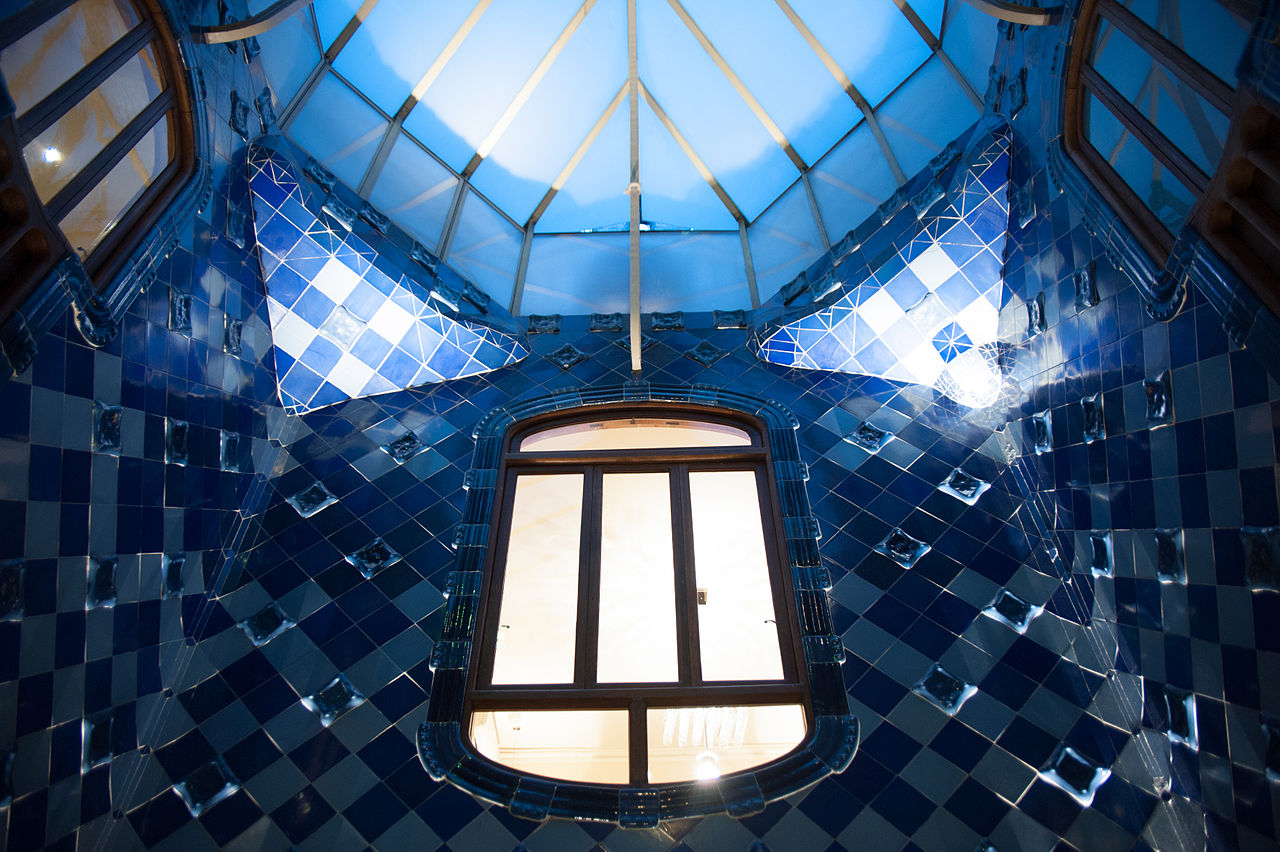
Casa Batlló, Antoni Gaudí, Barcelona – BCNDJI – DJI drone over Casa Batlló DJI Phantom 2 vision +
FROM:https://en.wikipedia.org/wiki/Casa_Batll%C3%B3
Don’t you think it’s addictive?
Want to know more about the beauty of architecture?
Come and join our members to explore the beauty of architectural design.
覺得看得不過癮嗎?
想要知道更多建築之美嗎?
快來加入我們的會員,一同探索建築設計之美。
The above article is purely for appreciation and sharing purposes, as well as the construction of new technology and the public can be in-depth understanding of the information at the same time there are sources, will be able to query, no use of the document as a commercial transaction, if illegal, please inform the We will immediately remove the site, thank you for cooperation.
以上文章純粹作為欣賞及分享用途,以及將建築新型技術傳遞給與大眾能夠深入了解,同時資料還有來源,將可查詢,絕無使用該文件資料作為商業交易行為,如有違法請務必告知該網站我們將立即處理撤除,謝謝合作。

